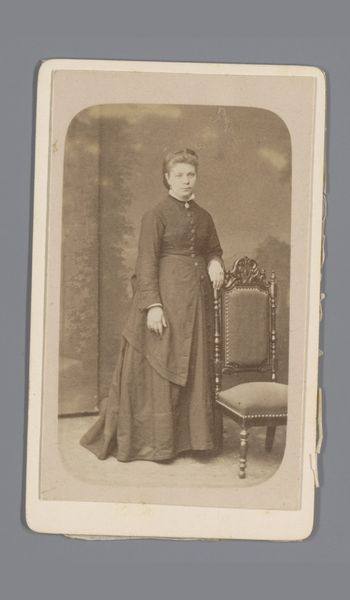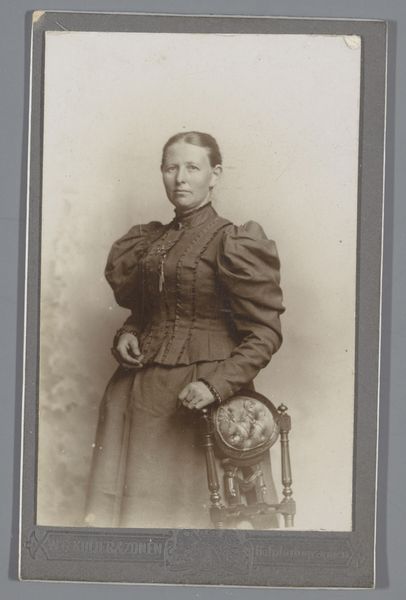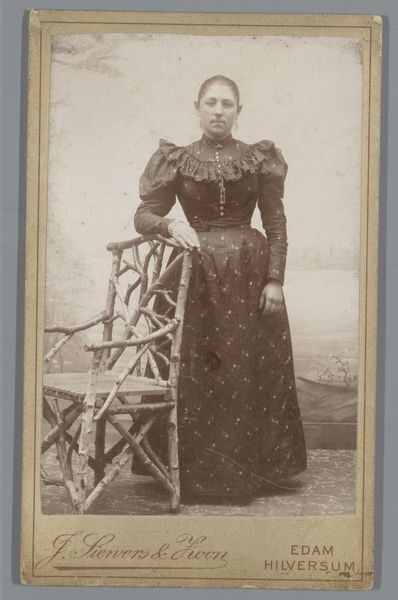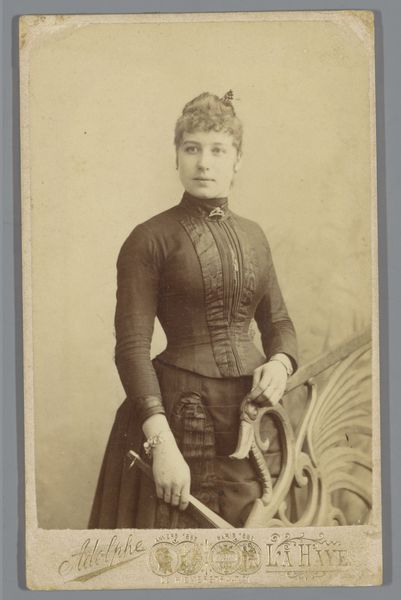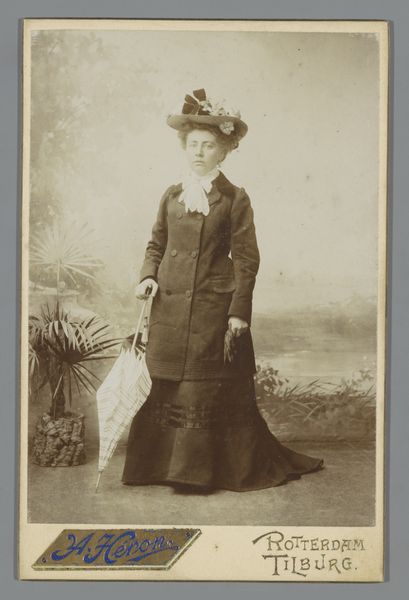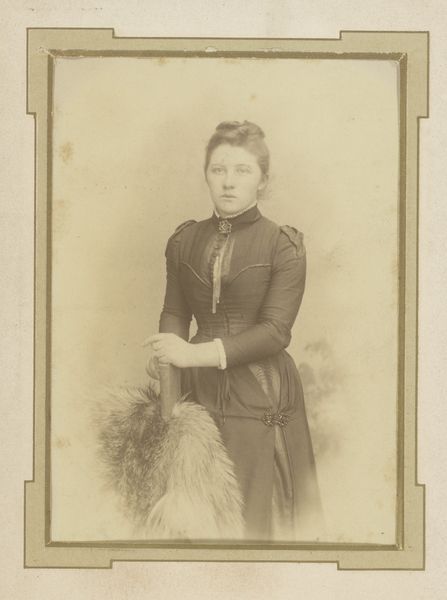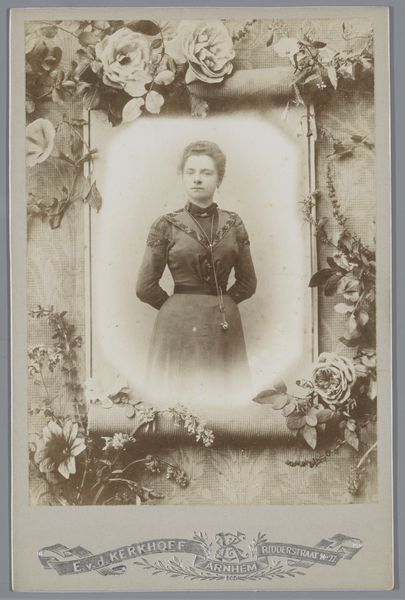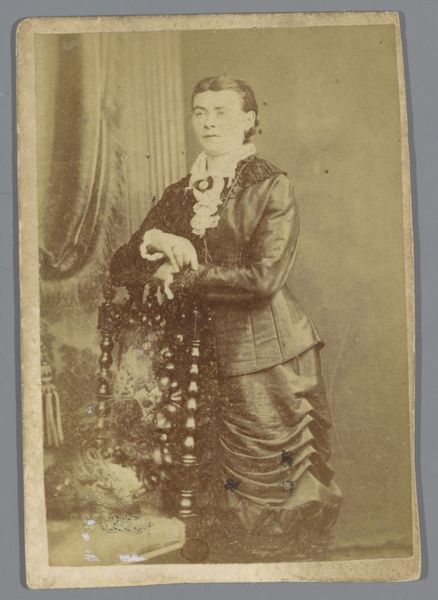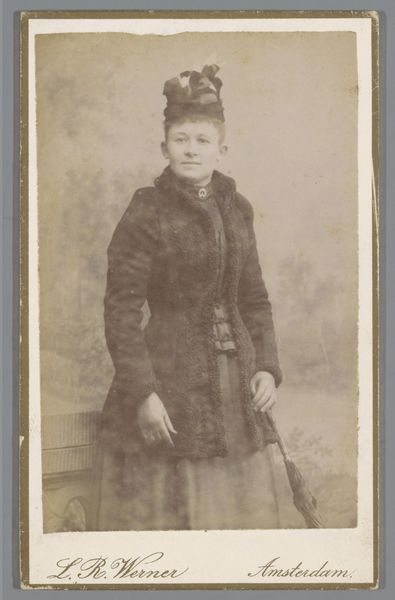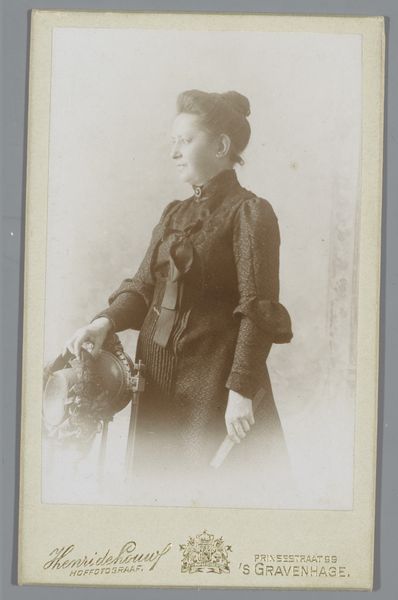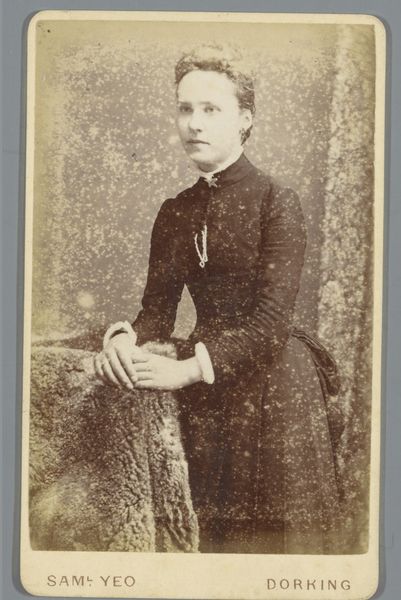
photography
#
portrait
#
photography
#
historical fashion
#
genre-painting
#
realism
Dimensions: height 103 mm, width 64 mm
Copyright: Rijks Museum: Open Domain
Curator: Let’s discuss this intriguing portrait attributed to W.G. Kuijer & Zonen, entitled "Portret van een onbekende vrouw, staande naast een stoel," created sometime between 1885 and 1906. It's a fascinating example of realist photography. Editor: My first impression is one of quiet dignity, yet there's a hint of weariness in her expression. The chair beside her almost acts as a silent participant in this tableau. Curator: Indeed. Let's consider the sitter's positioning, hand firmly placed on the chair. She's an unknown woman, so her dress is one way to locate her place in that world. What might her dress tell us about her class or identity in this late 19th-century setting? Editor: Well, look at the construction. Those puffed sleeves, the tight bodice. That wasn't sewn by just anyone. Think of the hours of labour involved in creating that garment – the textile production, the stitching, the assembly, possibly by several hands in a workshop. This shows she has, or had, the means for elaborate presentation. Curator: That’s a key point. Realist art frequently depicted the social circumstances of everyday people. Could the studio and its props become another layer to unpack here? The backdrop, for instance, suggests an idealized nature that is completely at odds with her clothes or what is implied from the labor surrounding her clothes. Editor: Right. Also consider that the photograph is not merely capturing an image; it's actively constructing one. The materials used – the photographic plate, the chemicals, the paper it's printed on - all affect the final image and the preservation of memory. Curator: These portraits, mass produced at this time, presented not just individuals but also served to standardize certain visual identities, so one question might be what were women supposed to signal to the world at this time, and where would someone without means enter into that play? Editor: Exactly! Looking at this piece gives me a greater appreciation for not only the final output but also for all of the components and labor that go into the photographic process. Curator: For me, it prompts consideration of this woman's place and identity in that historical period, allowing a dialogue about women's position then, and still, now.
Comments
No comments
Be the first to comment and join the conversation on the ultimate creative platform.
